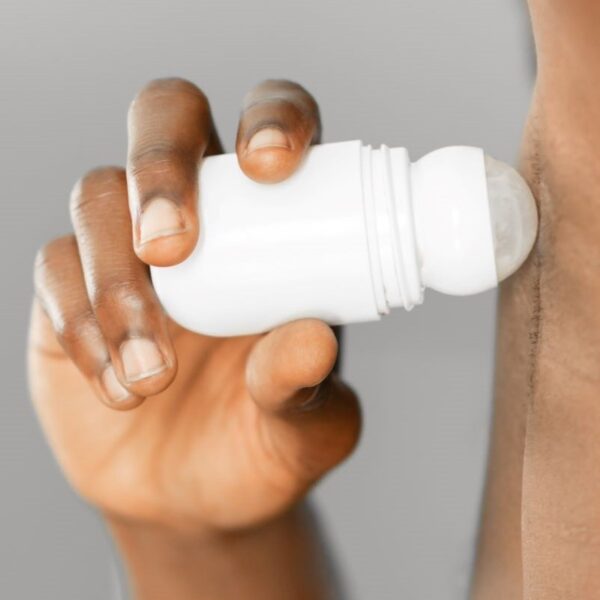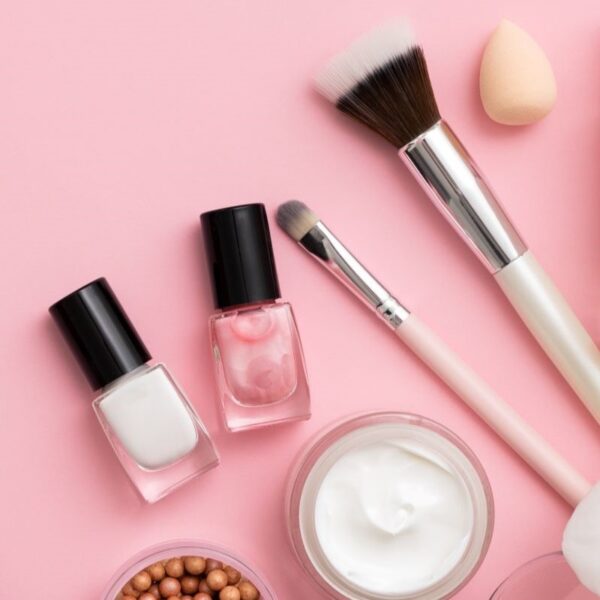Carbomer, also known as Acrylic Acid Polymer, Acrysol, and Carbopol 940, is widely used to build viscosity and control the consistency and flow of cosmetic products. Carbomers are acid-based polymers capable of strong mucoadhesion, particularly at low pH values. They have a high molecular weight and swell in aqueous solutions, which enables them to thicken product formulations and impart highly pseudoplastic rheology. Carbomers also provide stain protection and water resistance to materials.
What is Carbomer?
Carbomer is a collective name used for a series of synthetic polymers made of acrylic acid. These lightweight powders turn into a clear gel or liquid when neutralized. While they are popular as a thickening agent due to their ability to swell, they cannot swell without being neutralized by a base that converts them to their salt form. This base can be achieved by adding NaOH, NH4OH, or KOH. The carbomer polymers are typically compatible with most surfactants, including cationic, but most have some electrolyte and pH sensitivity.

Source: Wikipedia
How is Carbomer Produced?
Carbomer polymers are synthesized by free radical precipitation polymerization conducted in organic solvents. The solvents for this process are selected so that the monomers, initiators, and other additives are soluble in the reaction medium, but the resulting polymer product is not.
Producing carbomers involves suspending monomers (acrylic acid) in water and adding a reactive initiator. This initiator triggers the polymerization process, which forms the polyacrylic acid chains. These chains are then cross-linked with either a polyfunctional monomer or a polyfunctional crosslinking agent. The resulting product is then purified, dried, and milled into small particles. As three-dimensional cross-linked microgels, carbomers do not dissolve but swell remarkably in water after neutralization to form a gel.
Use of Carbomer in Personal Care and Cosmetic Products
Carbomer polymers are primarily used to make products more viscous and to maintain their texture, flow, and consistency. Carbomers can be found in various products, including skin, hair, nail, and makeup products and dentifrices.
- Skincare: Carbomer polymers are excellent emulsifiers, preventing water and oil from separating skincare products. They also absorb and retain moisture to make more rich and creamy products like lotions.
- Hair care: Carbomer polymers control the stickiness and consistency of hair care products and make them more spreadable.
- Oral Care: Carbomer polymers have a significant application in specific oral care product formulations, such as toothpaste, which thickens the product while imparting the appropriate rheological properties. It helps to stabilize the other ingredients in the formulation.
Applications in Personal Care and Cosmetics
Carbomer polymers serve several essential functions in cosmetics and personal care products, as described in the table below.
| Function | Applications |
|---|---|
| Emulsion stabilizing | Carbomers acts as an emulsifier to stabilize and thicken solutions. |
| Gelling Agent | Gelling agents increase viscosity and provide a complex internal structure. |
| Suspending Agent | Carbomers help distribute and suspend insoluble solids into liquid, preventing the oil and liquid parts of a solution from separating. |
| Thickening Agent | Carbomers are thickening agents that help control the viscosity and flow of cosmetic products. Thickening agents increase the viscosity of the formulations. Pigments must be uniformly suspended in the emulsion and should not sediment over time, and thickeners help maintain suspension. |
| Stabilizer | With their ability to control viscosity, carbomers stabilize the overall formulation. Due to their suspending and gelling capabilities, they help prevent the breakdown of emulsion and gel formulas. |
Product Examples
| Type | Examples |
| Skincare | Body Lotion, Creams, Face Gel, Face Packs, Sheet Masks |
| Hair Care | Hair Styling Gel, Shampoo, Hair Serum |
| Oral Care | Tooth Gel, Transparent Toothpaste |
| Sun Care | Sunscreen Gels |
Properties of Carbomer
| Appearance at 25° C | Fluffy White Powder |
| Physical Form | Solid Powder |
| Molecular Weight | 713.1 |
| pH (undispersed carbomer) | 2.5-3.5 |
| pH (neutralized carbomer) | 6.5-7 (depending on the amount of alkali added to neutralize) |
| Bulk Density (g/100 ml) | 19.5-23.5 |
| Molar Mass | Variable |
| Viscosity, (20 rpm at 25ºC, Neutralized Solution) (mPa.s) (0.5%) | 40000-60000 |
| Boiling Point | 141°C |
| Melting Point | 116°C |
| Solubility | Carbomer absorbs water readily upon contact with water, becomes hydrated, and swells. Swellable in water, glycerin, and ethanol. |
| Color | White |
| Odor | Odorless |
| Shelf Life | 2 years |
Recommended Storage and Handling
Store in a dry, well-ventilated place. Keep containers closed when not in use. Avoid freezing and protect from direct light.
Typical Formulations
Hair Styling Gel
This gentle, moisturizing hair styling gel leaves hair feeling soft, smooth, and silky. Hydrolyzed jojoba protein conditions the hair and skin with its natural moisture retention and film-forming properties, significantly improving the hair’s body, gloss, and smoothness. Carbomer helps in thickening the formula, making it suitable for application.
| PHASE | INCI Name | Trade Name | % Wt. |
| A | Water | Deionized Water | Up to 100% |
| PVP | Luviskol K 30 | 1.80 | |
| Triethanolamine | TEA (25%) | qs | |
| Carbomer | Carbopol-940 | 1.00 | |
| Methyl Gluceth-20 | Glucam E-20 | 0.50 | |
| Disodium EDTA | Versene NA2 | 0.50 | |
| B | Hydrolyzed Jojoba Protein | Jojoba PRO-HP | 3.00 |
| Polysorbate 20 | Tween 20 | 1.50 | |
| Benzophenone-4 | Uvasorb S5 | 0.04 | |
| C | Ethylhexylglycerin, Phenoxyethanol | Saliguard EHGP | 0.75% |
| Fragrance | – | 0.08 | |
| Total | 100% | ||
Source: Link
Formulation Procedure
- Add the required amount of water to a suitably-sized vessel. Mix well, creating a vortex if possible, and slowly sprinkle the carbomer into the water.
- Mix until uniform and free of lumps. Reduce the mixing speed to avoid aeration.
- Continue mixing and add the remaining Phase A ingredients. Continue mixing and add the Phase B ingredients.
- Continue mixing and add the Phase C ingredients.
- Mix until uniform.
Carbomer Formulation Considerations
- Thickens efficiently at low levels (0.1-0.2 wt%) in electrolyte-free systems, making it a good candidate for formulating simple chassis.
- Carbomer polymers are characterized by rapid wetting when they are in contact with water. Thus, sample preparation must be conducted precisely to avoid irregular powder dispersion that could lead to lumps and heterogeneous samples forming.
- The neutralizer must be chosen correctly according to the monograph suitable for the carbomer polymer. Otherwise, polymer precipitation could occur. Triethanolamine, NaOH, is used widely as the neutralization medium for carbomers.
| Physical Forms | Fluffy powder. Carbomer should be sprinkled onto the aqueous solution rather than added directly, as it can cause lump formation when added too quickly. |
| Stability | Mostly compatible with surfactants, including cationics. |
| Sensory Attributes | After neutralization, the texture becomes a very smooth, soft, transparent gel. Offers a pleasant sensorial experience with its rich, creamy feel and high clarity in gels. |
| Dosage | 0.2-1% |
| Interaction with Other Components | Electrolyte-tolerant at higher polymer levels, enabling the creation of formulations with pleasant aesthetics in systems containing electrolytes. Offers excellent rheology and suspension in challenging acidic or electrolyte-containing skin care systems. Thickens over a broad pH range (pH 4.0-12.0), enabling potential applications with active ingredients at low or high pH. |
| Source | Synthetic Polymer |
Safety & Regulatory Considerations
Carbomers are safe for use in cosmetics and personal care products and are generally recognized as safe (GRAS) by the US Food and Drug Administration (FDA). However, carbomer powder is very fine and toxic when inhaled, so wearing gloves, glasses, and a mask is recommended when handling carbomer powder during manufacturing.
| EU Information | Safe to use >0.5% |
| Cosmetic Ingredient Review (CIR) Information | Considered safe as an ingredient in cosmetics and personal care products |
Safety & Toxicity of Carbomer
- Carbomer polymers have demonstrated low potential for phototoxicity, photo-contact allergenicity, skin irritation, and sensitization at concentrations up to 100%.
- Uncommon side effects (may affect up to 1 in 100 people): eye swelling, eye pain, itchy eye, eye redness, increased tear production.
Identification Numbers
| Chemical Name | Polyacrylic acid |
| CAS Number | 9007-20-9, 9003-01-4, 76050-42-5, 9007-16-3, 9007-17-4, 9062-04-8 |
| EC Number | 618-347-7 |
| EINECS | 618-435-5 |
Maximum Usage
The maximum recommended usage level of carbomer is as follows:
| Category | Usage Level |
| Skin Creams, Gels | 0.5-1% |
| Skin Lotions, Hydrating Lotions | 0.2-0.75% |
| Skin Serums | >0.5% |
| Hair Styling Gels | 0.5-1% |
Fun Facts About Carbomer
- Carbomer is also used as artificial tears.
- Hydrogels derived from carbomer have attracted much study for use as bandages and aids for wound healing.
- Carbomers can swell up to 1000 times their original volume when dispersed in water.
Additional Sources & Resources
- ChemicalBook – Chemical Product Property
- PubChem – Carbomer-941 Compound
- ScienceDirect – Carbomer
- EUR-Lex – CELEX:32023R0440
- European Chemicals Agency – Substance Information
- ChemicalBook – Product Chemical Properties
- Prabhakar Panzade, Prashant K Puranik. Carbopol Polymers: A Versatile Polymer for Pharmaceutical Applications. Research J. Pharm. and Tech.3 (3): July-Sept. 2010; Page 672-675.







